What to Know About Installing an Outdoor TV in Your Backyard, According to Builders and Home Contractors
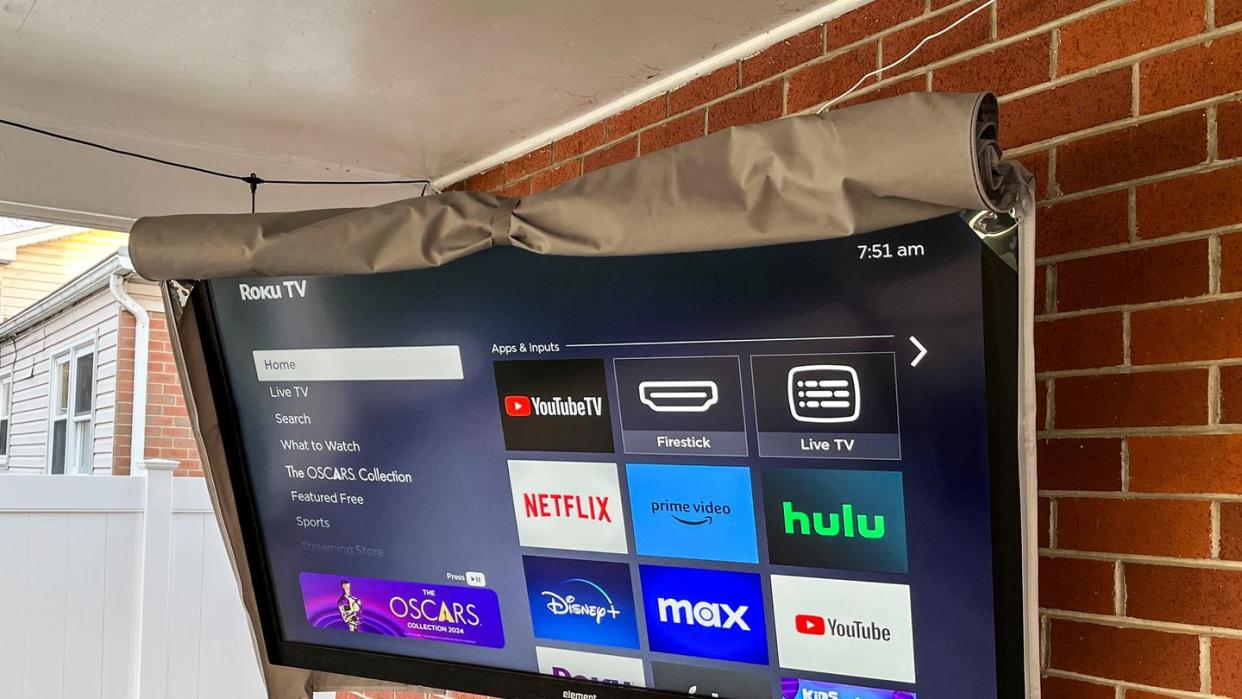
As the temps tick upward and you migrate back outside for the summer, why not take the TV with you? Deciding where to set up an outdoor TV can turn your backyard into an entertainment haven, but you'll want to find the best place to put it and make sure that it's installed correctly.
Before you grab the mounting hardware, there are key factors to consider when choosing where to set up an outdoor TV. These can include whether you DIY or hire a professional to install it, where you choose to place it for the best sound and visual quality, and how you weatherproof the unit.
Here's what installation experts recommend as you're surveying your backyard and patio space to determine where to set up an outdoor TV.
What tools do you need to set up an outdoor TV?
Just as important as choosing where to set up an outdoor TV is ensuring that you have everything you need to get the job done.
“Before starting, I always recommend consulting the installation guide specific to your TV model and mounting equipment to ensure you have the necessary tools and materials at hand,” says builder Drew Hamblen of Carolinas-based Fairview Custom Homes. He notes that the following equipment is typically required for outdoor TV installation:
Weatherproof cables and connectors
Mounting bracket specifically rated for outdoor use
Any tools required for assembling the mounting stand
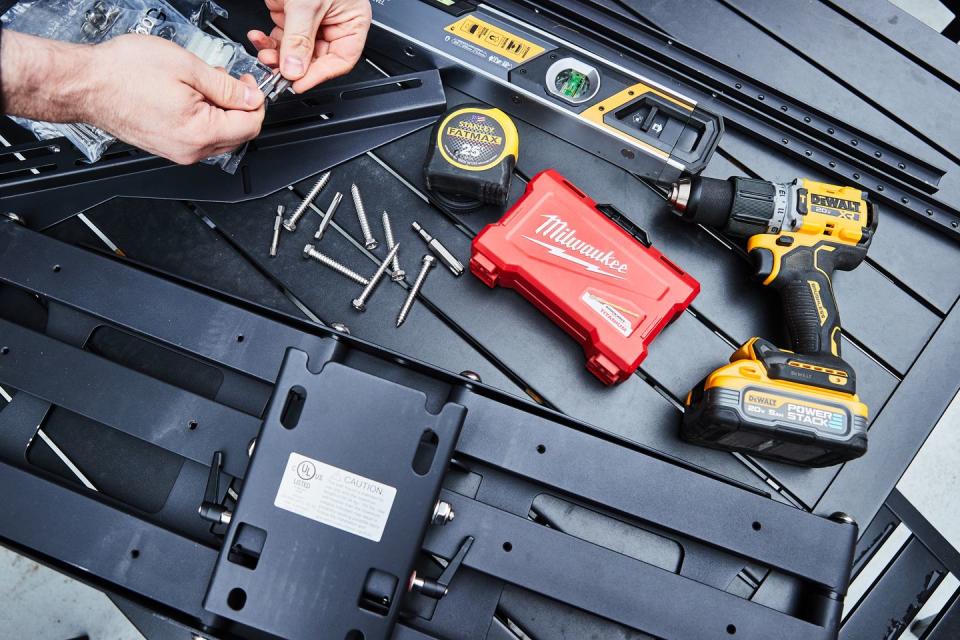
While mounting a TV is a fairly accessible DIY project, installing one outdoors can pose a unique challenge, as you'll have the elements to keep in mind as you set it up. If you have any concerns about structural support, electrical wiring, or the mounting setup, consider hiring a pro to do it for you.
Where's the best place to set up an outdoor TV?
Depending on the size of your backyard space, you may be limited in where to set up an outdoor TV. However, if you can choose between a few different spots or change your existing setup to accommodate the equipment, you'll be able to get the most out of this feature.
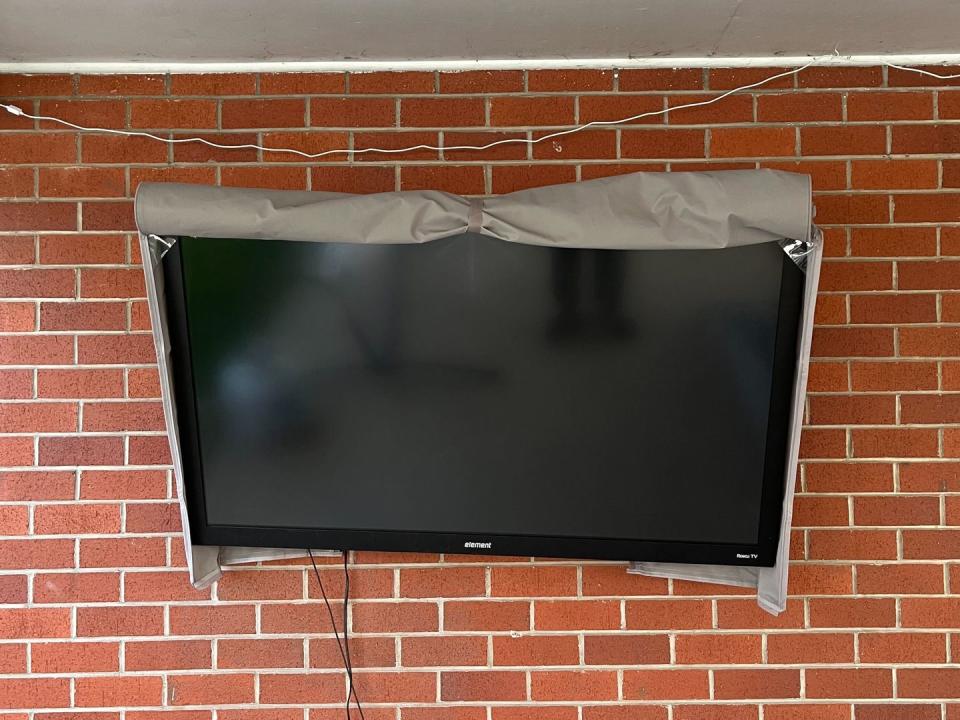
“Successful outdoor TV installation merges practical placement with focused attention on protection and sound quality,” says Hamblen.
Here's what the experts say are the most important factors to consider when choosing where to set up an outdoor TV.
Avoid direct sunlight
Direct sunlight can wash out the picture on your outdoor TV, making it difficult to see.
“From my experience, glare is the number-one enemy of outdoor viewing,” says high-end remodeler Bob Berriz of Virginia-based Berriz Design Build. “Choosing a location that benefits from natural shade during peak viewing times or incorporating a motorized shade system can dramatically improve your viewing experience,” says Berriz.
When shopping for an outdoor TV, make sure to choose one that has a high nit (i.e., brightness) rating that can display a clear picture even in low lighting.
Keep it dry
Depending on where you live, water damage can be a near-constant threat to outdoor electronics. If you don't have a covered patio or awning, it's a good idea to invest in a removable, weatherproof outdoor TV cover. These types of covers can protect your TV from rain, dust, and even insects.
“One of the things I emphasize is not skimping on weatherproofing materials. Investing in a high-quality weatherproof TV cover is non-negotiable,” says Hamblen. He stresses the importance of using outdoor-safe mounting hardware made from materials that are rust- and corrosion-resistant.
“A common mistake people make is underestimating the impact of the outdoor environment on both the TV and its mounting hardware,” says Berriz. “Stainless steel hardware is a must to prevent rust and ensure long-term stability,” he says.
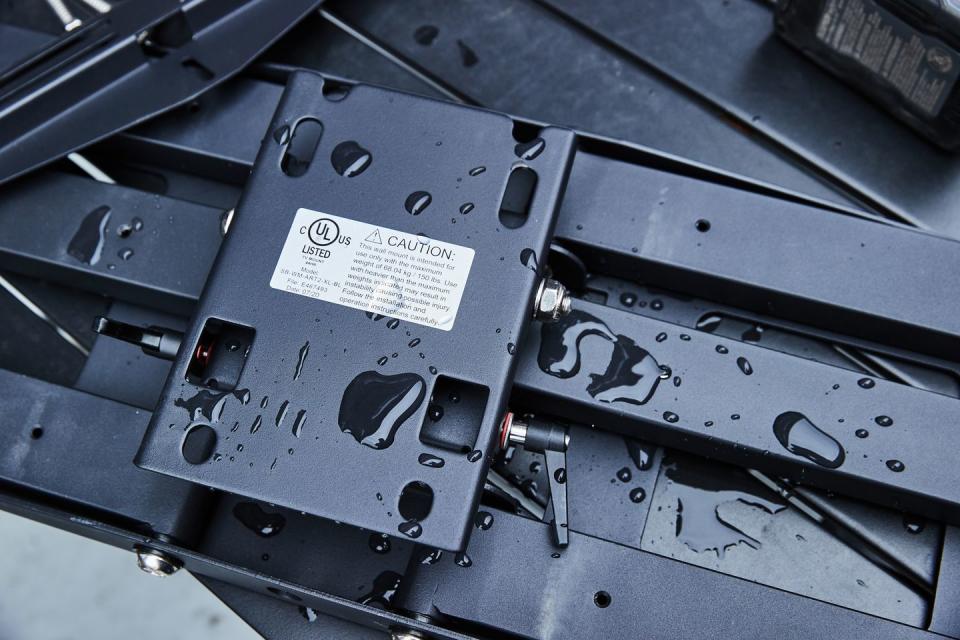
“Weatherproof not just the TV, but the connections to protect against outdoor elements, using silicone sealant on the cable entries to prevent moisture ingress,” says Shlomo Cherniak, a Baltimore-based handyman. “And don't expose the TV to extreme weather conditions without protection,” he adds. Outdoor TVs can usually withstand temperatures ranging from 24-122 degrees Fahrenheit, but always check the manufacturer's specifications.
Consider the sound quality
The outdoor environment will markedly affect the sound quality coming from your outdoor TV. Elements like wind noise can easily overpower your TV's speakers.
“Consider integrating an outdoor sound system that complements the TV audio, as built-in speakers often lack the power needed in open spaces,” says Berriz. Strategically placed outdoor speakers will enhance your acoustic experience — look for speakers designed to withstand the elements and consider installing them behind your seating area for optimal sound diffusion.
“Ensure all wiring and power supplies are also rated for outdoor use to prevent electrical hazards,” adds Berriz.
Protect your power outlet
“Lastly, confirm that the power outlet is properly grounded and protected by a GFCI (Ground Fault Circuit Interrupter) breaker for added safety in a potentially wet environment, and use only outdoor-approved cables,” advises Joel Worthington, the president of Mr. Electric.
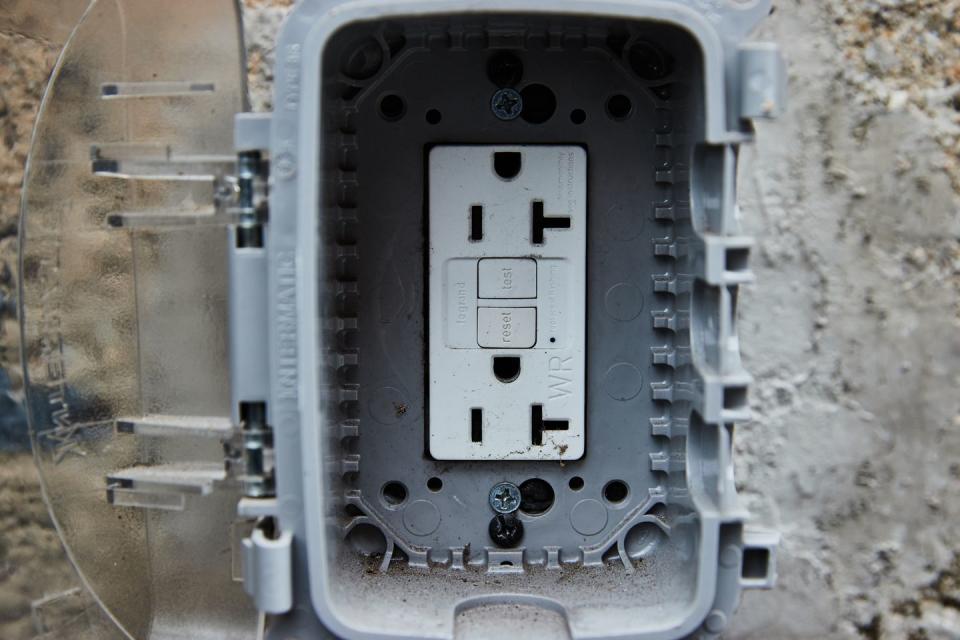
Make sure to use high-quality HDMI cables in appropriate lengths for your setup and get weatherproof cable covers and clips to safeguard them from UV rays and moisture. If necessary, you can consult a qualified electrician to install a new outlet or extend existing wiring.
You Might Also Like

